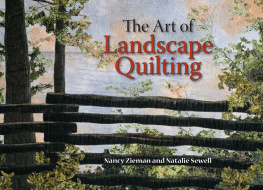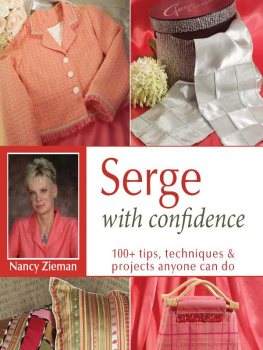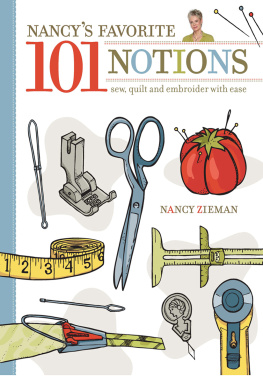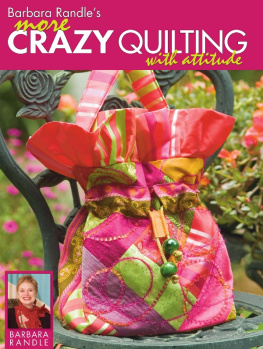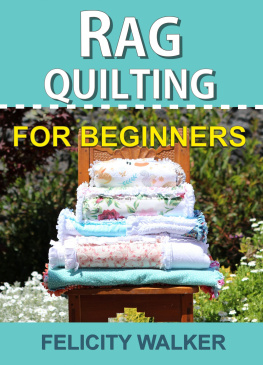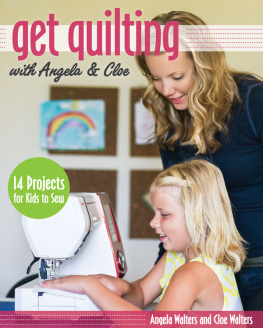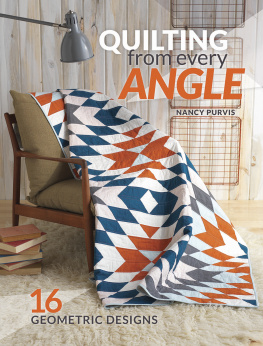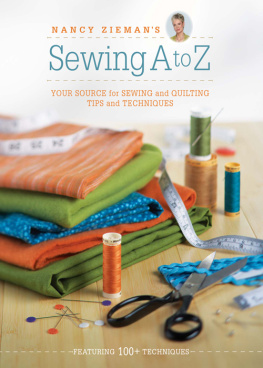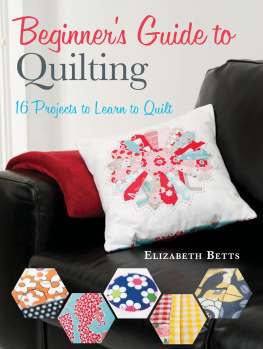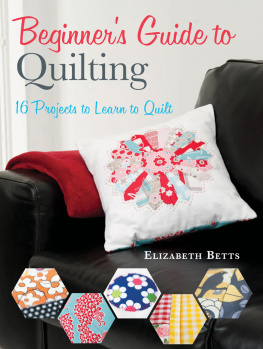
The Art of
Landscape
Quilting
Nancy Zieman and Natalie Sewell
2007 Nancy Zieman and Natalie Sewell
Published by

Our toll-free number to place an order or obtain a free catalog is (800) 258-0929.
All rights reserved. No portion of this publication may be reproduced or transmitted in any form or by any means, electronic or mechanical, including photocopy, recording, or any information storage and retrieval system, without permission in writing from the publisher, except by a reviewer who may quote brief passages in a critical article or review to be printed in a magazine or newspaper, or electronically transmitted on radio, television, or the Internet.
The following registered trademark terms and companies appear in this publication: Fiskars, Gingher, Quick Fix, Skydes, HeatnBond Lite, Warm & Natural, Warm Company.
Library of Congress Catalog Number: 2006934238
ISBN 13-digit: 978-0-89689-314-6
eISBN 13: 978-1-4402-2089-0
Designed by Heidi Bittner-Zastrow
Edited by Tracy L. Conradt
Photography by: Dale Hall
Printed in China
About This Book
Since the publication of our first book, Landscape Quilts (Oxmoor House, 2001), our passion for making landscapes from fabric has grown. So, inevitably, has our list of techniques we wish we had included the first time around. Realizing, to our amazement, that since the appearance of Landscape Quilts we have created more than 60 new pieces, we decided to write this book to incorporate our new ideas into our approach to landscape quilting.
Our first book, Landscape Quilts, is a how-to book. Landscape quilting was still in its infancy and readers wanted not only detailed instructions on all of our techniques but an introduction to the concept. We knew as we wrote it that our methods of using raw edges, messy cutting techniques, laundry markers and paper glue sticks as our tools had broken many traditional quilting rules. Because all of those methods still hold true for us today, Landscape Quilts remains a popular and helpful book.
But today, landscape quilting is an established technique. According to the latest Quilting in America survey, 33% of all quilters say landscape quilting is their favorite quilt design. We no longer have to introduce quilters to the concept. We know from talking with quilters everywhere that people want to see as many landscape quilts as possible and learn to make them.
For that reason we've designed The Art of Landscape Quilting as a personal journey through our quilt collections. Because most land scape quilts are horizontal, we've turned the format sideways (the book is 10 by 7 rather than 8 by 11) and depicted not only the quilts, the fabrics and the tools we used, but the steps and stages we went through to create them. Sometimes those stages aren't attractive and sometimes they're wrong turns but we show them to you anyway.
Apart from Chapter One on how to get started and Chapter Seven on how to finish your quilt, the text is personal. We each describe our own landscape quilt, what we hoped for when we began, what the journey was like and why we think we succeeded or failed. We know from our teaching experiences that you will learn just as much from our wrong steps as our right ones.
The best way to use this book is to read it through from start to finish, then mark the quilts that use techniques you want for your own landscapes. Although we depict several quilts step-by-step, most of the time we focus on the challenging aspects of each scene, such as how to shade an oak tree, how to create distant foliage, how to paint the lines of sidings on a front porch. Our hope is that you will use our tips and tricks to create effects in your own landscape scenes inspired by photos you love and that you will have a happy landscape quilt journey of your own.
Natalie and Nancy
Chapter 1
How to Begin
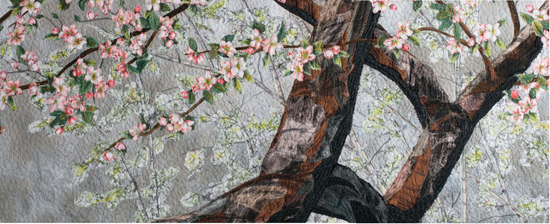
Out On A Limb by Nancy Zieman (47 40)
Welcome to the art of landscape quilting. We think you may be surprised to learn how simple these nature scenes are to make. You will not need templates, patterns or complex tools. You don't need to know how to draw. Scissors, some fabric markers, a few glue sticks and a small collection of cotton fabrics will get you started.
The leaves, trees and shrubbery that cover our landscape quilts are simply motifs from our landscape fabrics which we cut out, glue and machine appliqu to background fabrics. We enhance the motifs with fabric paint or pastels, and then machine quilt and bind the piece. This technique allows almost as much spontaneity as painting does. And the final result can be as unique as you are.
Photos for Inspiration
Artists who use paint, pastels or pencil can bring their tools directly to the scene that inspires them and create on site. Fiber artists cannot. We have to depend on photographs not only for our inspiration but also for assessing scale, texture, hue, and depth in our scenes. Even when the photo is only a jumping off point for a landscape quilt, it plays a very important role.

The most important characteristic of any photo you consider as your inspiration for a landscape quilt is that you love it. You find yourself looking at it repeatedly and intensely. The site it depicts means a lot to you. You rush to your fabric stash (or local fabric store) to find matches for the elements in it the bark, the leaves, the water, the rocks, etc. You put it in a special place and come back to it time after time. Since you will be spending untold hours recreating it in fabric, you need to care about it.
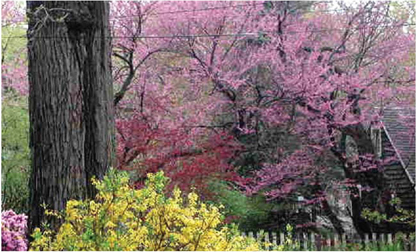
The second most important characteristic of your photo choice is that it be fairly good. It does not have to be of professional quality but its hues should be intense enough to show you where the light is coming from. Its details should be vivid. Its perspective should be one you can reproduce easily. Remember that you will be interpreting the photo and translating it into art, not copying it. If it has elements or structures you don't want or need, leave them out. Change the type of trees at your will; reduce or enlarge the foliage. You are the artist.
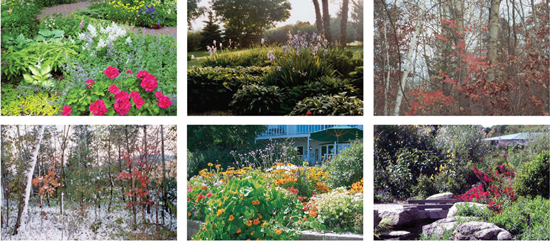
The final consideration should be who took the photo. Let's say that one of your landscape quilts wins a prize at a quilt show or gets noticed by your local newspaper and you are asked to provide not only a photo of it but of the scene that inspired it. Photographs are protected by copyright laws. If your landscape quilt is inspired by a professional photo from a book, calendar, magazine, or print, you must get permission to reprint it in any form. Permission from publishers or professional photographers can be hard to come by and sometimes involves a long, legal process. For that reason, the safest path is to use either your own photos or ones taken by friends, family, or local photographers who are often only too happy to give you permission to reprint their work. We have learned from experience to bring our cameras along on any outing that may lead to a landscape quilt inspiration. Given our passion for landscape quilting, that means we carry our cameras everywhere.

